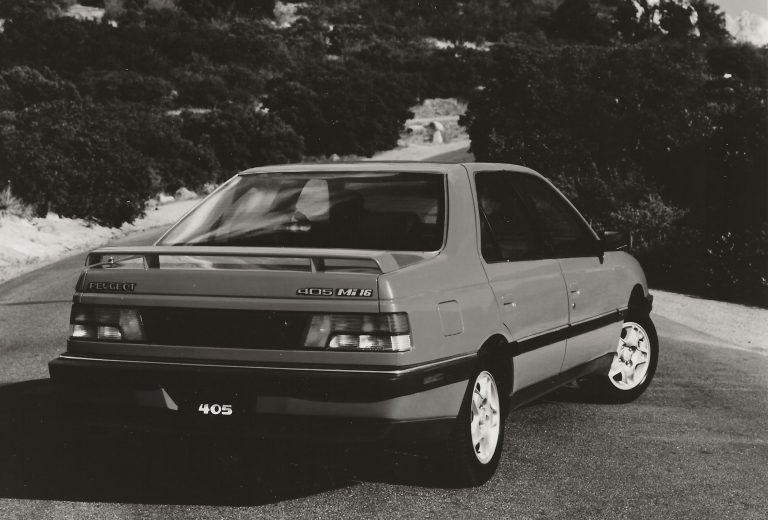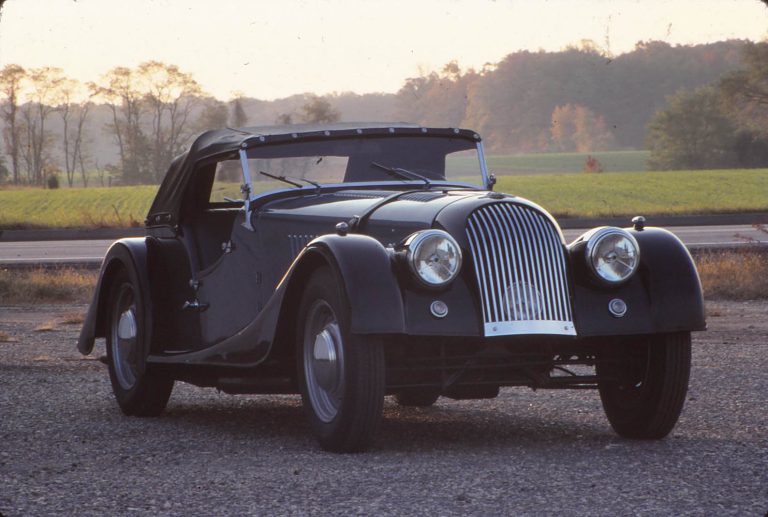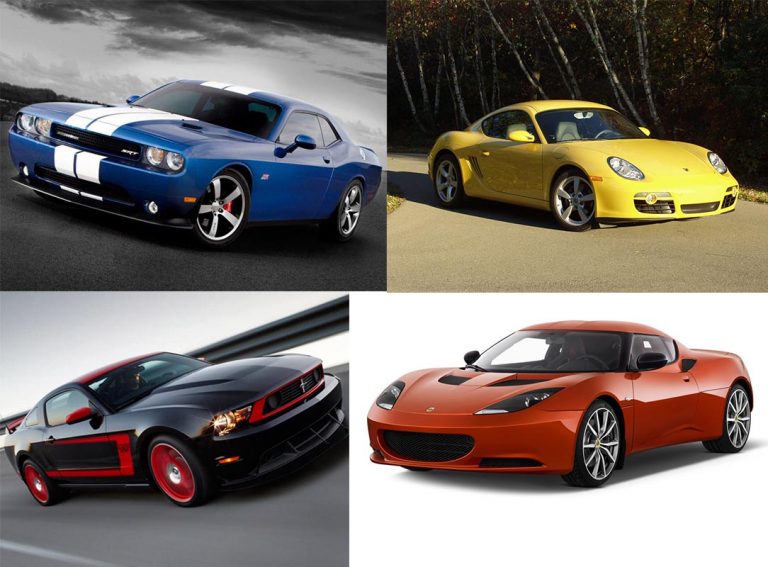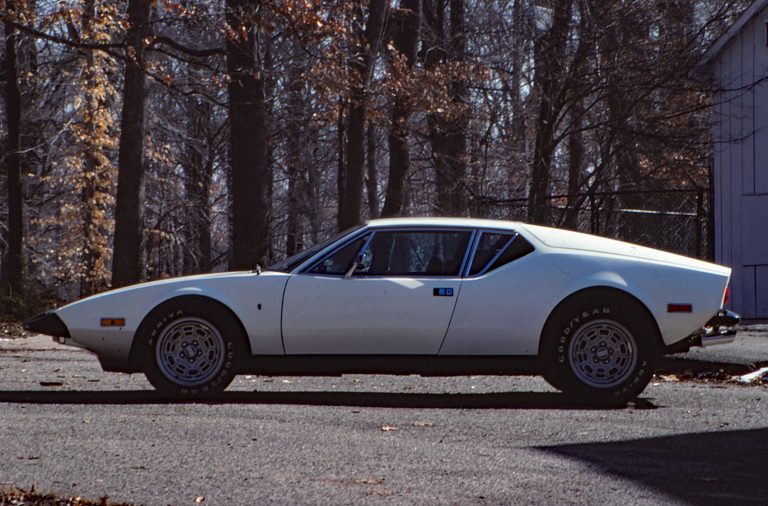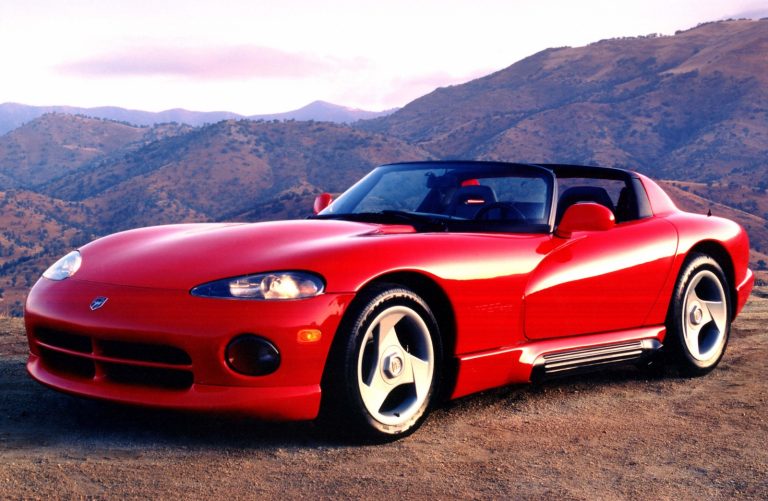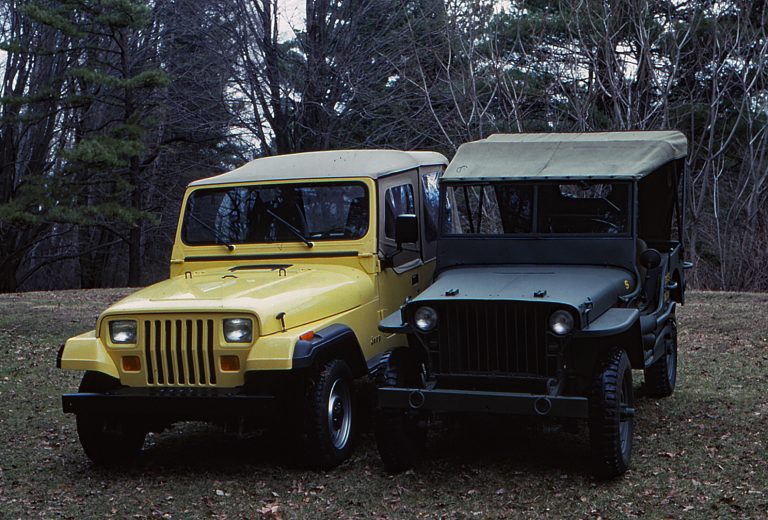Originally published in European Car, August 1994
1976 Lancia Beta Scorpion, photos by John Matras
What a concept. The country that gave us the Fiat X1/9 – which Road & Track magazine called “the best handling car in the world” – a big brother, a mid-engined sports car with real beans. More power! In fact, they’re calling it the X1/20. Looks? It’s a Pininfarina design, a virtual spinoff and a baby brother to the Ferrari Boxer.
Yeah, lines should a formed. Dealers shoulda been making a small fortune off mandatory undercoating – as it turns out, not a bad idea – or just some good old-fashioned price gouging. It shoulda been another Mustang, another 240 Z.
But it wasn’t. Something got lost on the way to the American market. Like “more power.” And on top of that, it had a base price so high that dealers got nosebleeds from the altitude. But that’s getting ahead of the story…
After repeated delays, a new Italian sports car was finally introduced at the 1975 Geneva Motor Show. It had been developed first as Fiat project X1/8, later changed to X1/20, it was shown on the Lancia stand as the Monte Carlo, celebrating the marque’s success in the famous rally. Not that it mattered all that much. Fiat had in 1969 swallowed up it’s erstwhile competitor, and putting the Lancia nameplate on the car justified the Italian conglomerate selling the sports car for a higher price. Never mind that the Lancia nameplate had absented the U.S. market subsequent to the emissions standards established in 1967.
But the Monte Carlo looked good, the wedge-shaped coupe that Motor Trend would later call “one of the wildest-looking cars to hit our shores in some time.” And the Pininfarina-designed, engineered and built body had already proven itself in rally competition as the a Abarth 030 prototype with a second overall in the 1974 Tour of Italy, powered by a Fiat V-6 engine. The production version got a stroked (and otherwise modified) version of the 1756cc Fiat twin-cam four used in the Fiat 124 and 131. With 90.0 mm of piston travel, the twin cam four became a two liter and was rated at 120 bhp DIN at 6000 rpm with a single two-throat carburetor. Observers expected 100 bhp SAE net for the coming U.S. version. As in the X1/9, the engine was mounted transversely behind the passenger compartment.
It was not, however, just a bigger X1/9. The entire power unit, in two-liter form, was lifted from the front-drive Lancia Beta series, sharing with the Fiat only the concept of making a mid-engine car from the front-drive package. Furthermore, the Fiat was a Bertone project, while the Monte Carlo came from Pininfarina.
To say the car received rave reviews on its opening night is an understatement. Crowds reportedly ignored the Ferrari stand to gather around the Monte Carlo. Road & Track put a cluttered car show photo of the car – calling it the Monte Carlo – on its cover. Moreover, Pininfarina was tooled up to build 100 Monte Carlos a day. A large portion was expected to go to the U.S.
It took a year from its Geneva debut, however, for the Monte Carlo to reach American shores. Introduced with front-drive Beta HPE (High Performance Estate), the Monte Carlo was renamed Scorpion for U.S. consumption (Chevy owned Monte Carlo – the name, not the principality). The delay was not caused by installation of the DOT-spec bumpers, grotesque bars that added six inches to the cars length but by meeting EPA exhaust emissions. Lancia engineers didn’t de-smog the 1995cc engine, but rather certified the 1756cc motor already used in the sedan and sports coupe that reintroduced Lancia to the U.S. market the year before. But instead of the 1975’s 86 bhp/8.2:1 compression ratio engine, for 1976 Lancia dropped the compression ratio to a soft-serve 8.0:1 and added a catalytic converter to the exhaust gas recirculation and exhaust manifold air injection. So instead of the production European rating, from 8.921 compression ratio of 115 bhp DIN at 6000 rpm and 121 lb-ft of torque at 3500 rpm, Americans were faced with a mere 81 hp at 5900 rpm, torque peaking at 89 lb-ft at 3200 rpm. Lancia advertised a curb weight of 2370 lb (77 lb more than the Euro version), but emissions certified the car at 2750 lbs. Performance of the U.S. version slid to around 11.5 to 12.0 sec for the 0-60 mph dash, compared to around nine seconds in European trim, this despite the final drive ratio of 3.92:1 instead of 3.72 to 1. The net effect was the Scorpion not significantly faster than the Fiat 131 four-door sedan. A road test in Road & Track (9/76) summed it up: “So lovely, so agile, so ingenious, so slow.”
Of course everyone loved the mid-engine layout, the then future of every sports car. Not only did it give the benefit of Low Polar Moment, but it was totally benign as well, refusing to go into trailing throttle oversteer. And of course you weren’t going to lose the rear end from applying too much power. Ultimate cornering ability was quite good for the era, if not astounding. Road & Track measured 0.766 lateral g’s on the skidpad, about as much as could be expected from contemporary 185/70-13 radials. The 13×5-1/2 cast alloy wheels had to be, however, the wildest set of rims ever put on a vehicle as standard equipment. Ride was considered remarkably supple, though R&T thought the braking had too much front bias. Car and Driver’s test, however, set a record that was stand for years.
If the Scorpion drew a crowd at a car show, seeing one on the street was like, well, seeing a Ferrari Boxer. Both were from the same house and shared a similar profile. But while the Scorpion featured curves, they’re arcs, not the jellybean contours of today. The curves have creases. It was the ‘70s, after all. The Scorpion also suffered from too much matte black: inserts in the bumpers, a broad bumper-height stripe down the side, a strip at the base of the flying buttress and a diagonally across to the hide the cabin exhaust vent. Worst was a massive black band around the nose [painted body color in our photo car] that made the Scorpion look like a refugee from an early safety car project. The Monte Carlo aka Scorpion also world-debuted the frameless windshield, glued in place.
A bold Lancia badge centered on the grill at least let everyone know what this exotic thing was, and two semi-retracting headlamps, though getting something of a cross eyed look when down, rose less than two inches when fully raised, Lancia’s way of meeting the U.S. headlamp laws (Euro cars had model-specific rectangular lamps). Under the grill, which hit the front-mounted radiator, was a duct that led cooling air back to the engine compartment. All Scorpions came with an ingenious Pininfarina-patented fabric top – optional and rare on European Monte Carlo’s – that lifted off the windshield header and was rolled up in order to drop into a compartment over the B-pillars for semi-alfresco driving.
Luggage fit under a front-hinged hood, a surprising 6.7 cu-ft between the strut towers. The engine cover hinged on the left, looking odd but working well. A full-sized spare (with cast aluminum wheel) was wedged into the left rear corner, the engine on the right side of the engine compartment.
For better or worse, the interior had show car styling as well. Although passé now, the instrument panel was a rectangular pod mounted on the dash. The minor gauges were novel, especially for Italy–horizontal bands, but not very easy to read. The tach and speedometer had conventional white-on-black dials but fat yellow needles that looked like crayons: different isn’t always better. Radio and heater controls were on the central console, though ventilation, despite the slots of the dash, was not the Scorpion’s strong point. And the optional air-conditioning (an afterthought at Lancia) couldn’t blow the sweat off a gnat. The two-spoke sports steering wheel was almost conventional, but the bucket seats had unusual hard plastic shells (leather trim optional). Seatback rake adjustment was by a plastic lever on the seatbacks. European journals complained of a lack of power with 115 bhp on tap, so you know that stateside writers were absolutely frustrated by such a slow car they otherwise so wanted to love. Slow? Road & Track recorded 13.4 sec for 0-60 mph. The standing-start quarter-mile oozed by in 19.1 seconds with a trap speed of 71.5 mph. And instead of the easy-revving, free-breathing engine for which even budget Fiats have been famous, the emission controls so strangled the Scorpion’s engine that anything past 5500 rpm was a strain – this with a nominal 6300 RPM redline.
Pricing didn’t help either. The list price on a 1976 Scorpion was $9943. Metallic paint added $250, leather seats $349, AM/FM stereo $200, the pathetic a/C $589. Wimpy screw drive electric windows added $210 and dealer prep was $75. A maxed out Scorpion went out the door for $11,616. For reference, across your friendly Fiat-Lancia dealer’s showroom floor were the Fiat 124 Spider at $5845 and Fiat X1/9 at $4947. No surprise, then, that a mere 1386 ‘76 Scorpions were sold, especially after Road & Track had called it a “eunuch.”
For 1977, Lancia came back with cosmetic changes, most notably replacing the solid sail panels with glass inserts, improving rear visibility but making the car look something like a Maserati Merak. The only other significant change was to amber, instead of red, rear turn signal lenses. U.S. sales slid to a mere 438. Lancia pulled the plug, making 1977 the final year for the Scorpion.
Sales of the Monte Carlo had also been slow in Europe, far short of the original 20,000 annual projection. After some 1978 models were built, production was stopped until the 1980 model year when, mildly facelifted, the Monte Carlo was brought back. Met with another yawn, it lasted only through 1981. When all was said and done, about 7300 Monte Carlos and Scorpions were made. Helluva concept. Helluva car. And, especially for Lancia, helluva disappointment.







